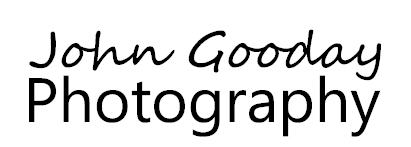A review of Kiwi Fotos LP169 quick release tripod plate (it's not as boring as it sounds... no, really...)
In which John investigates an alternative to the painfully expensive lens plates offered by many tripod manufacturers.
Some things in life are expensive. This is definitely true in the photographic business. So when I have to hand over a wheelbarrow of cash to a shop in exchange for a new lens or camera, I usually console myself with the belief that you get what you pay for. Sometimes, this belief breaks down. Especially when it comes to tripod equipment.
Just to be clear, I'm not complaining about the cost of tripods and heads themselves - the Gitzo and Uniqball models that I have aren't cheap, but they are very well built and will provide rock-steady support for my alarmingly obese glassware and electronics for years to come. What I'm talking about here are the metal plates that I use to attach my photographic pride-and-joy to the aforementioned tripods. These are just machined pieces of aluminium / steel in varying lengths, yet they seem to cost about as much gram-for-gram as a gold jar filled with a mixture of diamonds, Philippe Patek watches and giant pandas. Let me give you some examples... Want a medium lens plate to attach a 70-200 mm lens to an Arca Swiss fitting head? A model from a major manufacture will cost you £50 plus postage. Need a plate for a 500mm super telephoto? That'll be £65 please, sir. Camera plates are even worse. And, of course, you'll want a plate for each lens and camera otherwise by the time you've swapped from one bit of equipment to the other, your wildlife quarry will have caught something cute and furry for dinner, eaten it, and left the scene for some R'n'R elsewhere. So much for getting the shot. And now your bank manager is sending threatening letters because you ran up a national debt-sized overdraft ordering enough shiny new British/Swiss/Italian/American big-name lens plates for each of your toys, so you are having to economize by renting your house out and living in your pop-up hide. It's not a happy scene, is it?
So, the last time I needed more plates I decided to see whether there were non-mainstream third party alternatives that were... usable. Consulting the interweb revealed a number of companies offering plates for sale on Amazon and ebay. I purchased a long (169 mm) lens plate made by Kiwi Fotos and bought from Amazon. This cost about £22 (that's about £60 less than a slightly shorter plate from a well known manufacturer). On inspection, the Kiwi plate was precision machined and nicely finished. It had the same safety screw locks on the bottom as my other (expensive) plates, which is handy if , like me, you prefer your lens not drop to the floor whenever you forget to fully tighten the head clamp. I tried a few unscientific tests (wedged it between some large flat rocks and stood on it to see if it would bend / break. It didn't.) before attaching it to a super telephoto lens and taking it into the field (an actual field, as it happens, to photograph some hares...). A neat ridge at the end of the plate fitted square to the lens foot and prevented any rotation when turning the camera with a high friction setting dialled in to the tripod head. It fitted all my Arca Swiss style heads perfectly. And those of a couple of other photographers that I showed it to. That was three months ago, and I can report that it's working fine (although, given that it's a machined piece of metal and not a satellite/computer/electron microscope etc., I guess that's not a great surprise). I'm currently trialling camera plates by Promedia Gear... so far they're also absolutely fine.
So, I think the moral here is that a precision-machined lens plate from one company is pretty much the same as from another, regardless of price. (I'm sure there are exceptions, but you get the general idea). It's a pity it took me so long to work it out...
A picture of the precision engineered piece of oddly shaped metal discussed above.


